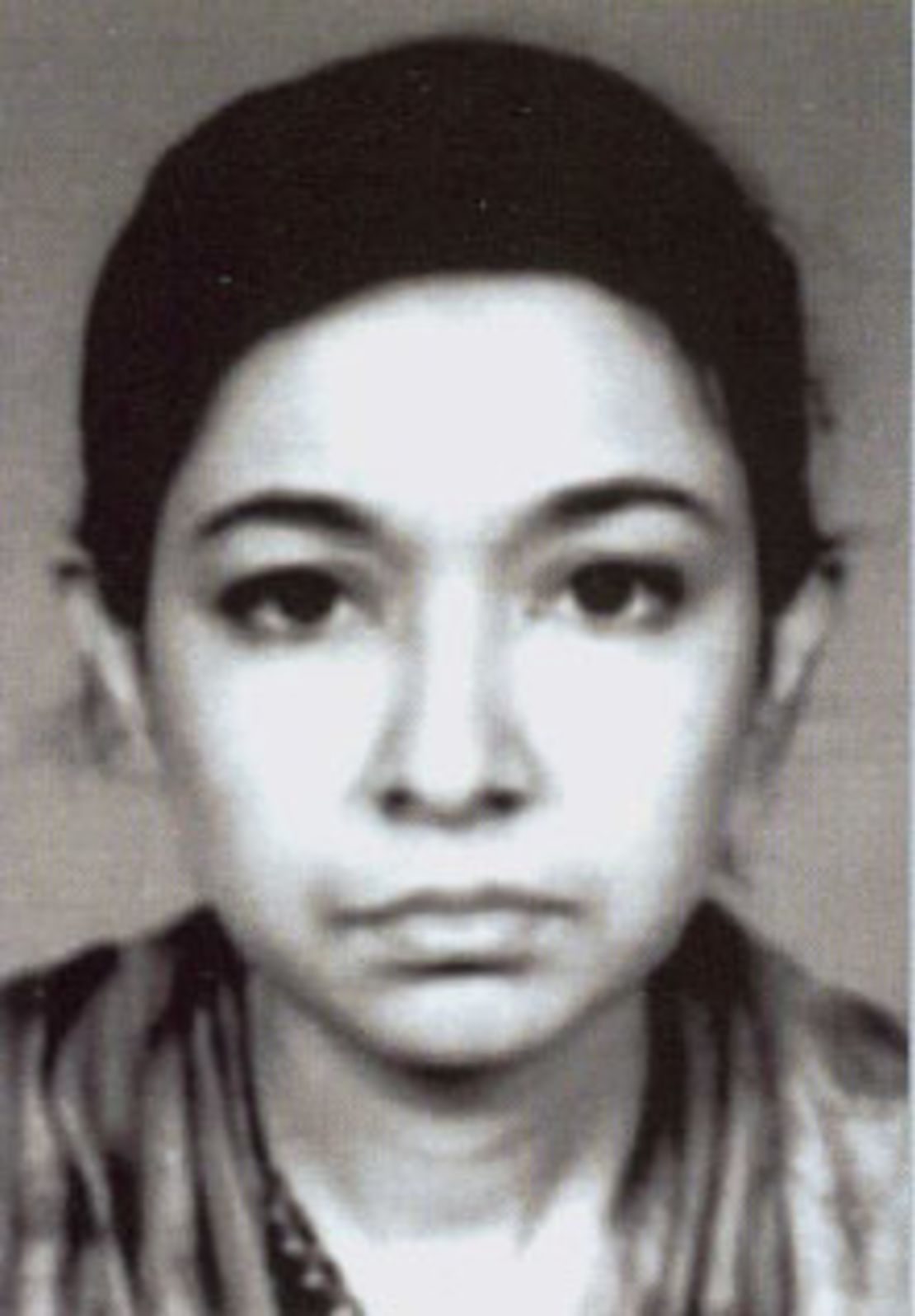Story highlights
Aafia Siddiqui is serving 86-year sentence in a Texas jail for attempted murder
The neuroscientist shot at Americans in Afghanistan in 2008, authorities said
Militants have named her in potential hostage swap deals
But her sister says she has no terror links and has been wrongly jailed
The sister of a Pakistani prisoner described as the “poster girl” for Islamic jihad has urged ISIS hostage-takers to let their captives go.
Speaking exclusively to CNN from her home in Karachi, Pakistan, the sister of Dr. Aaifa Siddiqui said the jailed neuroscientist’s family wanted “no violence in Aafia’s name.”
“I’m Aafia’s sister. We’re Aafia’s family. And we speak on her behalf as well. We want no violence in Aafia’s name. Our whole struggle has been one that is dignified that is peaceful that is legal,” Fowzia Siddiqui said.
A jury in New York convicted Aafia Siddiqui on seven charges, including attempted murder and armed assault on U.S. officers, in 2010. No one was wounded in the incident. She is serving her 86-year sentence at a facility in Texas.
At the time of the 2008 shooting, Siddiqui was in police custody after being arrested outside the Ghazni governor’s compound in Afghanistan. She was said to be acting suspiciously and found to be carrying “numerous documents describing the creation of explosives, chemical weapons, and other weapons involving biological material and radiological agents,” according to court documents.

The papers included descriptions of various U.S. landmarks and military assets, excerpts from the “Anarchist’s Arsenal,” and a number of chemical substances in bottles and glass jars, the documents said.
Terror links?
Siddiqui has never been charged with a terror-related offence, though U.S. authorities made the link long before her capture. In 2004, she was placed on an FBI alert list as a sought-after al Qaeda member.
Her family has insisted she has no ties to terror.
“There is no connection with al Qaeda, the Taliban or any terrorist organization. She wasn’t even charged with terrorism,” Fowzia said.
However, Saddiqui’s name has recently appeared on documents purportedly from Islamic militants in Syria. A letter sent to the family of U.S. journalist James Foley, before video of his beheading surfaced this month, said the U.S. government had been given “many chances” to negotiate for his release. It singled out Siddiqui by name.
“We have also offered prisoner exchanges to free the Muslims currently in your detention like our sister Dr Afia Sidiqqi (sic), however you proved very quickly to us that this is NOT what you are interested in,” the email said, which was published in full on the GlobalPost website.
‘She is an icon’
Fowzia Siddiqui said her sister’s name had been appropriated by terrorists to suit their own agenda. “Any kind of kidnappers, ISIS these days, the Aafia brigade, or whoever wants to claim Aafia,” she said.
She said labels like “Lady al Qaeda” and the “Grey Lady of Bagram,” used by the media in reference to her sister made her cringe.
“When I hear these things, like Lady al Qaeda –I don’t even want to repeat that word – and you know, it hurts. It really hurts.”
Deborah Scroggins, the author of “Wanted Women,” said Siddiqui had become a cause de celebre for followers of jihad.
“She is an icon, she is the poster girl for jihad, a rallying point … she’s not just any woman, she is the premier symbol of the Muslim woman in distress,” she said.
Conflicting accounts
Fowzia, an accomplished clinical neurologist who trained at Harvard Medical School, said her family had suffered tremendously since Aafia vanished with her three young children in March 2003.
She had just finished her thesis in cognitive neuroscience, and had left the family home to go to Islamabad, but never arrived. The youngest child was just six months old.
“It’s as if she had fallen off the surface of the Earth … I can’t tell you how painful it was not knowing. You know if someone dies then you have a closure. Here, there was no closure,” Fowzia said.
Five years of rumor and false leads ended in 2008 when news emerged that Aafia was in U.S. custody, accused of crimes for which she was later imprisoned.
Prosecutors said Siddiqui shot at two FBI special agents, a U.S. Army warrant officer, an Army captain and military interpreters while she was being held unsecured at an Afghan facility on July 18, 2008. The warrant officer returned fire, shooting her in the torso, according to court documents.
Her family said the official version of events was wrong.
“She was in custody. How could she in custody snatch a rifle, or even pick up a rifle from six armed U.S. marshals, one woman?” she asked. “I mean, these are U.S. Marshalls, FBI agents trained in weaponry, how could she? It just doesn’t make sense.”
Calls for release
Fowzia said her sister was the victim of the “war on terror,” that she said had created an atmosphere of fear and prejudice against Muslims.

“It’s like they are labeled guilty and not even given a proper chance to prove their innocence, and a similar kind of thing happened with my sister,” she said.
She said a lot of a misinformation had created a false impression of a woman who had wanted to use her degree to improve education in Pakistan. The family claims Aafia was never married to the nephew of 9/11 mastermind Khalid Sheikh Muhammad, as had been widely reported.
A online petition to the White House seeking Aafia’s release has received more than 100,000 signatures over several weeks, and her family is currently seeking her release on appeal.
“Aafia should be released, but not for ransom, not in exchange, not for other people that are kidnapped by extremists, no. She should be released because that is the right thing to do,” Fowzia said.





